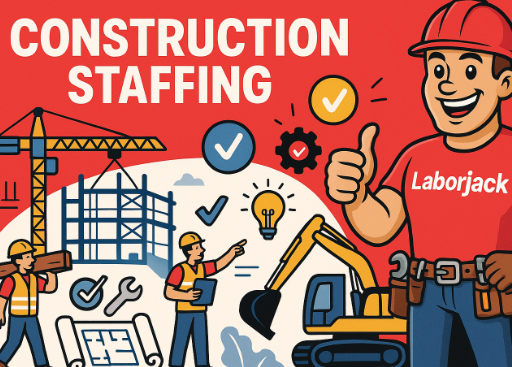The construction industry is at a crossroads. As of 2024, Colorado faces a shortage of more than 30,000 construction workers, with workforce needs projected to grow by as much as 32% by 2030.
Colorado’s construction workforce gap is widening—and fast.
Nationwide, 94% of construction firms report difficulty filling positions, with many unable to find applicants who meet the necessary training or credential requirements.
Labor shortages aren’t just numbers—they’re missed deadlines and rising costs.
This shortage isn’t an abstract statistic; it’s a daily challenge affecting project timelines, budgets, and productivity. The skilled labor gap is estimated to cost the construction industry roughly $10.8 billion every year, primarily due to longer project completion times and inefficiencies on site.
The labor crisis is draining billions in productivity losses annually.
For Colorado contractors, these challenges are particularly acute. Despite the state’s robust construction sector, demand for skilled labor far outpaces supply, leading to project delays, overtime, and escalating costs.
Demand remains strong, but capacity can’t keep up.
The need for a reliable, flexible staffing solution has never been greater. This is where Laborjack’s construction workforce solutions come into play—helping companies bridge the labor gap, protect schedules, and preserve profit margins.
A smarter labor strategy isn’t optional anymore—it’s a competitive advantage.
Nearly 9-in-10 Colorado contractors report workforce shortages, and the region has seen measurable construction job declines even as demand shifts - meaning capacity, schedule reliability, and margins are under pressure. If your projects are slipping, your bids are getting risk-loaded, or overtime is exploding, this guide is for you. Associated General Contractors+1
The problem in numbers (your CFO will pay attention)
- Labor access and inefficient labor are the leading cause of project delays. Industrywide surveys show a persistent, acute shortage of skilled craft and trade workers that directly drives schedule slippage and cost escalation. Associated General Contractors.
- Colorado’s construction employment has softened. Metro-level data and reporting indicate pockets of decline even while project demand remains for infrastructure, energy, and multifamily sectors-creating uneven supply/demand and wage spikes in hot trades. Axios+1
- National scale: the need is significant. Trade groups estimate the industry needs hundreds of thousands of new workers to restore capacity; the shortage impacts bidding, insurance costs, rework, and quality. abc.org+1
Why these matter to you: every 1% of schedule delay multiplies indirect costs (supervision, equipment idle, extended general conditions). For a $10M job, minor slippage can mean tens of thousands in profit erosion; the CFO will want a plan that ties labor strategy to margin protection.
Understanding the root causes of the labor crisis is crucial in developing a comprehensive labor strategy. By targeting the right levers, you can effectively address the shrinking and aging pipeline, geographic mismatch, turnover and retention failures, and inefficient hiring processes that are contributing to the shortage.
- A shrinking and aging pipeline. Fewer entrants from traditional apprenticeship and trade schools; younger workers are underrepresented. HBI
- Geographic mismatch. Growth in certain Colorado submarkets (data centers, energy, infrastructure) pulls workers away from other projects. Axios
- Turnover & retention failures. Poor onboarding, inconsistent schedules, travel burden, and lack of career ladders push workers to other employers. Associated General Contractors
- Inefficient hiring processes. Slow screening, fragmented payroll setup, and compliance headaches cost weeks per hire. Associated General Contractors
8 proven, actionable solutions (your Ops team can start this tomorrow)
1) Build a short-term “capacity buffer” with flexible crews
Use a mix of on-call, pre-vetted journeymen and temp-to-perm crews for predictable surge weeks (concrete pours, roof cycles). Price it into bids as a defined contingency rather than an open line item - CFOs prefer that transparency.
2) Create a Colorado-centric wage and mobility map
Benchmark trade wages across Denver, Colorado Springs, Greeley, and mountain markets. Where travel is required, offer standardized per-diem + housing stipends to reduce churn and absenteeism. (Use BLS / local county wage tables as baseline.) Bureau of Labor Statistics
3) Launch a “Fast-Onboard” program (7-10 days)
Streamline hiring: digital forms, pre-qualification skills checklists, one-day safety orientation, and guaranteed first-week schedule. Cut time-to-productivity and reduce early quit rates.
4) Partner with community colleges and apprenticeships
Create a pipeline by co-designing short modular courses (60–120 hours) targeted to your trade needs - electrical helpers, concrete finishers, HVAC helpers - with guaranteed interviews for graduates. Industry surveys show that workforce partnerships reduce vacancy duration. Associated General Contractors
In Northern Colorado, BUILT NoCO provides an excellent model for collaboration. This nonprofit promotes construction career pathways starting in high school, offering hands-on training, industry-recognized certifications, and direct connections to employers. Laborjack has an established relationship with the BUILT NoCO board and executive director, opening doors for further collaboration. By partnering with programs like BUILT NoCO, construction firms can tap into a trained, motivated pipeline of future skilled workers, while also demonstrating commitment to workforce development in the local community.
5) Measure productivity - and pay for it
Track crew-level metrics (i.e. linear feet poured per day, drywall sq. ft./hr, install hours per unit) and tie a portion of compensation to verified productivity gains. This converts wages into a performance investment rather than pure cost.
6) Invest in mobile-first workforce tools
Give crews an app for shift offers, time capture, training micro-modules, and instant pay. Quick pay and schedule transparency increase retention. (Operational wins: lower payroll disputes, fewer missed shifts.)
7) Use regional float crews and “hub” staging
Maintain small float teams in transit hubs (e.g., northern Front Range, mountain corridor) that can be deployed for short windows - cheaper than long-haul travel per project and faster response to weather or material-driven shifts.
8) Audit & simplify compliance/payroll
Many hiring delays are due to paperwork, COI gaps, or multiple fringe benefit systems. Consolidate through a single payroll/vendor partner with Colorado-specific expertise to shave weeks off onboarding.
Final Thought & Next Step
Construction labor challenges aren’t going away quickly, but they are manageable with an adaptable staffing strategy.
Laborjack provides the speed, reliability, and local knowledge Colorado contractors need to protect schedules and margins during unpredictable labor cycles.
If you’d like, we’ll prepare a one-page proposal showing how a 2-week pilot could work for your next project (including exact costs and a timeline to get crews onsite).
Ready to explore a pilot? Book a 30-minute call and we’ll tailor a plan to your next project.







